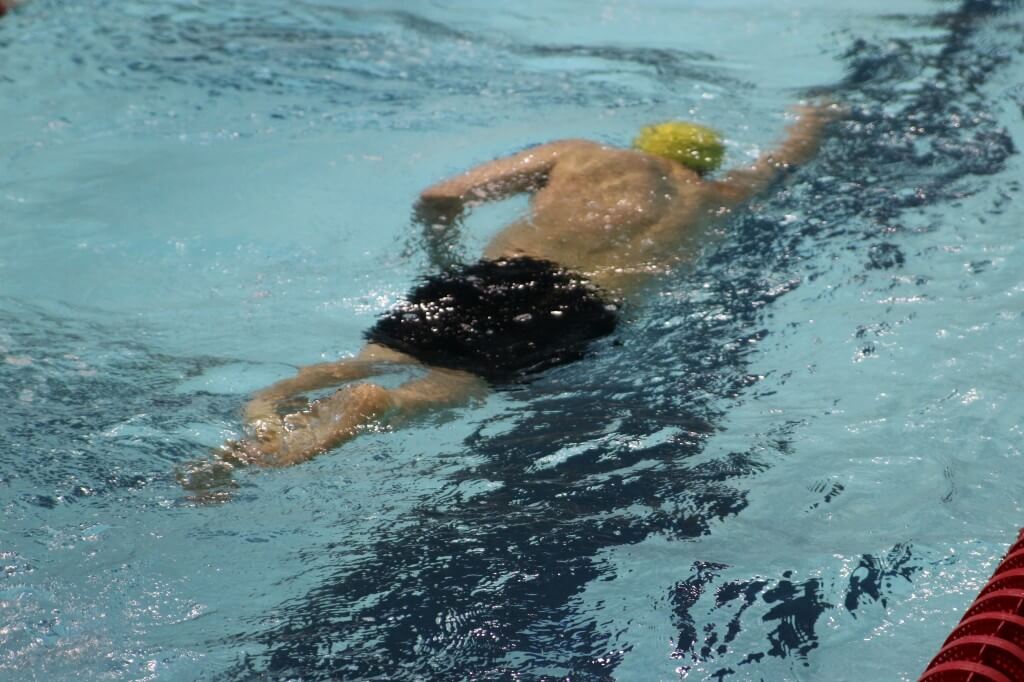Dr. Detective: Swimming Core Training for Low Back Pain

by Dr. G. John Mullen
The Dr. Detective series details swimmers with pain, injury or limitation. In this edition, we examine the case of an Olympic Trials qualifier in the 1500-meter freestyle. Some may think elite swimmers have little to improve, but this is never the case. As you’ll see, a slight modification greatly helped this young man. The name of the client in this scenario was changed to protect his identity.
See the past Dr. Detective: Digging for Clues Behind Shoulder Labrum Pain for more background information.
The Patient
Frank was a 17-year-old swimmer, heavily recruited for college swimming and concentrating more on distance freestyle. As a younger swimmer, he was highly versatile and always ranked nationally in multiple events. Frank had developed a six-month history of low back pain on his right side. He reports pain during swimming, as well as dryland. The pain was a dull ache, but was not constant. The pain level reached a 6 out of 10 at worst. He had not seen a physician or therapist previously for this low back pain.
An Objective Out-of-water Analysis
The swimmer was a typical swimmer, with rounded shoulders while standing, but plenty of active shoulder motion. In fact, he had excessive shoulder blade mobility, as these blades fluttered as he moved his arms above head. Visually, Frank was very thin and lacked must muscular definition in his core. He reported his weakness in the pool was an inability to change speeds, which he felt was crucial during his races. He often negative-splits his race (i.e., swam faster on the second half of the race).
Frank demonstrated pain during lumbar extension, as well as during left side bending. All other ranges of motion were pain free.
During the core testing, Frank was very strong during isometric holds, but weak when integrating his arms, as well as poor eccentric control of spinal flexion. Frank also demonstrated poor transverse plane strength, wiggling from the hips during core testing.
In-Water Analysis
In the water, Frank had a beautiful stroke. He seamlessly created an early vertical forearm in the pool as he cruised at mile pace. However, when asked to swim faster, he had a tough time, arching his lower back to achieve the speed necessary. This change in position likely dispersed the energy created by the arms during the catch, thereby wasting energy.
He also poorly integrated his kick and his catch during the faster swimming, as he demonstrated a slight wiggle down the pool. This wiggle, like the arching, likely dispersed energy and slowed him down.
Out-of-water Intervention
For Frank, we set up an anterior core strengthening program, emphasizing eccentric core strength. Once he improved this eccentric core strength, we integrated his arms. On top of this, Frank began performing foam rolling of the thoracic spine for his swimmers’ posture and self myofascial releases (SMR) for the quadratus lumborum, for his overused low back muscles.
Foam Rolling For Thoracic Spine
Quadratus Lumorum Self-Myofascial Release
Once these areas improved, we progressed the core exercises to include the use of his upper body for the anterior sagittal and transverse planes of motion. Last, we initiated a core power program, specifically with medicine ball throwing.
Hands Over Head Curl
Rotational Medicine Ball Throws
In Water Intervention
Frank was instructed to swim slightly more downhill, particularly when sprinting. This was echoed by his coaching staff.
Summary and Next Steps
After three weeks, Frank’s low back pain resolved. He also noted improvements in his swimming, dropping 10 seconds in his mile and more than two seconds in his 200 free at his taper meet. These improvements are clearly not from this work alone, but the associated improvement in velocity during his shorter races makes me believe we were on the right track. The next progression for Frank is a continuation of his core power training and implementation of posterior core strengthening. For his swimming, he is now focusing on coordinating his kick with his catch, hopefully eliminating any wasted energy and rotation, which can increase low back pain stress and create drag.
Order Swimming Core Training today!
Also, if you are looking for some free tips on improving your swimming, click here.




Yea.
ا
السباحة تساعد علي شفاء كثير من الام عظام الجسم
حياك الله معقول كد